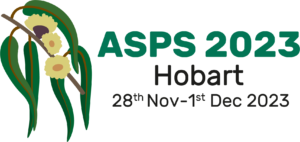Welcome to Phytogen for February 2023.
Introducing Professor Martha Ludwig
This year we have a new President, Martha Ludwig from the University of Western Australia. Hope you enjoy reading about her journey so far.
Winds of Change
Martha went to Smith College, Northampton, Massachusetts, completing a BA in Biological Sciences. The college is a private liberal arts, all-women’s college (https://www.smith.edu/about-smith). Degrees are four years and in addition to taking maths, chemistry, physics, and biology, Martha also took units in English literature, history, philosophy, Greek and Roman mythology, and German. The President of Smith College at the time (1980s) was Professor Jill Ker Conway, the first woman President, who had grown up in the Australian outback (https://en.wikipedia.org/wiki/Jill_Ker_Conway). Professor Conway wrote the famous memoir The Road from Coorain. Coorain is an Aboriginal word that means “windy place”.
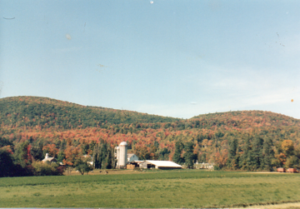
Figure 1. The Ludwig Family Farm in Vermont, USA (autumn, c1985).
Before college, Martha, like Jill, grew up on a farm. The family dairy farm (Fig. 1) was in rural Vermont where she kept busy milking cows, doing field work, tending the veggie garden, picking blueberries from 500 bushes, and working in her grandparents’ apple orchard.
Martha always enjoyed being outside in the warmer months, working with plants and watching them grow. Once in high school she became fascinated with microscopes.
After college, Martha did her PhD at McGill University, Montréal, Canada, in the lab of Prof Sarah P Gibbs. She focused on the eukaryotic endosymbiotic origin of some algal chloroplasts. At the time, the prokaryotic endosymbiotic origin of chloroplasts limited by two membranes had been accepted, e.g., a cyanobacterium was engulfed by a colourless eukaryotic host cell. However, some algal chloroplasts are surrounded by four membranes and in two groups, the cryptomonads and the chlororachniophytes, an organelle called the nucleomorph, which was postulated to be the vestigial nucleus of the endosymbiont, is present between the outer and inner pairs of membranes. Martha showed using microscopy and DAPI staining that the nucleomorphs of both cryptomonads [8] and the chlororachniophytes [9] contain DNA. Nucleomorph genomes have since been sequenced by other groups and the eukaryotic endosymbiotic origin of some chloroplasts is now in biology textbooks. Martha also developed techniques in immunocytochemistry to localise pigment-proteins in the lumen of cryptomonad thylakoids during her PhD [10]. 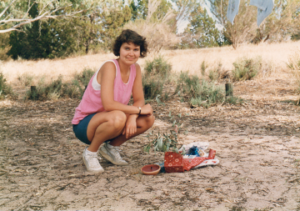
Figure 2. Martha’s first Aussie Christmas. Lake Hattah, Victoria (1989).
Having had enough of long winters, Martha came to Australia for science, sun, and adventure. She held several postdoctoral research positions, initially at the University of Melbourne, where she continued to work with unicellular algae in the labs of Rick Wetherbee and Jeremy Pickett-Heaps. It was a steep learning curve to learn the taxonomy and ultrastructure of the red and brown algae, diatoms, etc. Martha worked on the golden-brown algae, the chrysophytes, and the cryptomonads. These algae have cell coverings or scales that can contribute to marine biofouling; however, little was known about their biology. Along with PhD students in the lab, Martha developed monoclonal antibodies against proteins associated with the cell coverings, which allowed, through immunolabelling, the developmental and deployment pathways of the cell surface components to be worked out [7; 12; 15]. While in Melbourne, Martha fell in love with Australia; the Melbourne trams, friendly people, bushwalking, remote regions, and the better weather; yes, you read correctly, Melbourne weather is better than that in New England and Montréal (Fig. 2)!
An ARC Postdoctoral Fellowship (the predecessor to the DECRA scheme) at Queensland University of Technology in the lab of Jim Burnell involved a switch to land plants and development of a molecular biology toolbox – another steep learning curve! It was in the Burnell lab that Martha began her ongoing work with Flaveria, a genus of plants in the family Asteraceae with C3, C4 and C3-C4 photosynthetic intermediate species. This genus is a model group to look at the evolution of C4 photosynthesis and her work focussed on the molecular evolution of the C4-associated form of the enzyme carbonic anhydrase (CA), which catalyses the first step of the C4 pathway (Figure 3) [11]. Brisbane is where Martha learned to live outside all year round and, with members of the Burnell lab and others in the QUT Centre for Molecular Biology, did more bushwalking and travelling to and in the regions of Queensland (Figure 4).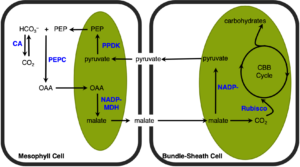
Figure 3. The C4 photosynthetic pathway used by Flaveria and Neurachne species. CA, carbonic anhydrase; CBB, Calvin, Benson, Bassham; NADP-MDH, NADP-malate dehydrogenase; NADP-ME, NADP-malic enzyme; PEP, phosphoenolpyruvate; PEPC, phosphoenolpyruvate carboxylase; PPDK, pyruvate phosphate dikinase; Rubisco, ribulose-1,5-bisphosphate carboxylase/oxygenase.
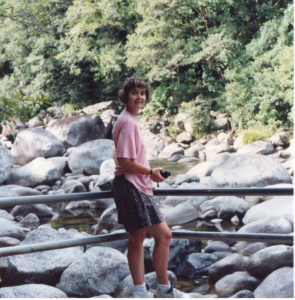
Figure 4. Bushwalking in Mosman Gorge, Daintree National Park, Queensland (c1994).
Experience in the Burnell lab and a third post doc position at the Australian National University, working with Murray Badger, Dean Price, and Susanne von Caemmerer, opened opportunities to interact with Hal Hatch, the discoverer of the C4 photosynthetic pathway, and his group at the CSIRO in Canberra. At the ANU, Martha continued to work with Flaveria and CA [13; 19], but also examined the components of the CO2 concentrating mechanism of cyanobacteria [14; 16] and added transgenic technology to her molecular toolbox. At the ANU, Martha became a member of ASPS and was the Genetics and Molecular Biology Discipline Representative. In addition to the fantastic science community, Canberra also was the gateway to the NSW coast, the mountains, more bushwalking, and Sydney to watch the cricket!
At Macquarie University in Sydney, Martha had her first continuing position and relished in coordinating and teaching a unit on the evolution of land plants as well as teaching into other plant biology and biochemistry units (Figure 5). There were further experiments with the von Caemmerer lab and Bob Furbank (CSIRO) working with transgenic Flaveria in which the activity of the C4-associated form of CA was greatly reduced. The results of this work illustrated the importance of the enzyme for proper functioning of the C4 CO2 concentrating mechanism [20]. Experiments with Flaveria showing the loss of the sequence encoding the transit peptide from the ancestral C3 chloroplast CA orthologue was responsible for the evolution of the cytosolic C4-associated enzyme were initiated at Macquarie. These definitive experiments were done by excellent Honours and PhD students [17, 18].
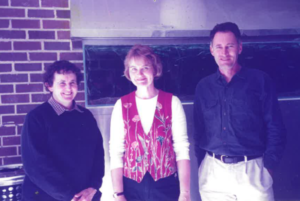
Figure 5. The plant cell, molecular biology, and physiology teaching team at Macquarie University (1999-2003). Alison Downing, Martha, Brian Atwell. Not pictured, Malcolm Reed.
Martha moved to the University of Western Australia in 2003 and continues to work on the molecular evolution of C4 photosynthesis. Like Brisbane, Perth is conducive to living outside regardless of the season. While writing an ARC grant application to further her work on Flaveria, she remembered having read about work done by Paul Hattersley in the 1980s on Neurachne, a group of Australian endemic grasses that have C3, C4 and C3-C4 photosynthetic intermediate species. She now has all species of the Neurachne growing in the UWA glasshouses and has led international teams in the reconstruction of a robust phylogeny of the genus [3] and identification of key steps in the molecular evolution of C4photosynthesis in the group [6]. Of course, Neurachne CA is a focus with the evolutionary mechanism of the C4-associated CA showing similarities to that of the Flaveria enzyme [4]! There have been many fieldtrips to the arid and semi-arid regions of Western Australia, Northern Territory, and Queensland to collect the different Neurachne species, with several trips involving the expert Paul Hattersley (now retired)! Terry Macfarlane from the WA Herbarium and Department of Biodiversity, Conservation and Attractions, who worked with Paul in the 1980s, is Martha’s extraordinary collecting buddy (Fig. 6). Travelling to the remote regions to collect the plants is a highlight of Martha’s research, fuelling her love of being outside, and opening a new world, as previously she was a lab-based plant scientist. ExaminingNeurachne spp. emphasises the importance of biodiversity in our environment and like all good science, it never ends, with analyses of leaf transcriptome data now underway to understand more globally the molecular evolution of C4photosynthesis in this monocot group. Work with Flaveria has continued, including the regulation of the C4-associated CA with Peter Westhoff’s group at the Henrich-Heine University, Düsseldorf [5] and comparisons of metabolic profiles of the C3, C4 and C3-C4 intermediate Flaveria species in collaboration with Mark Stitt and John Lunn at the Max Planck Institute of Molecular Plant Physiology [1, 2]. Martha has remained involved in the ASPS as Whole Plant Discipline Representative (2004-2005) and the ASPS Honourable Secretary (2014-2016).
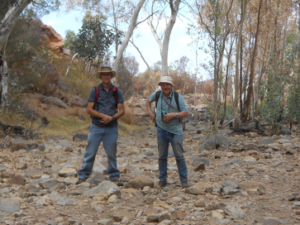
Figure 6. Terry Macfarlane and Paul Hattersley on a Neurachne collecting trip in the Northern Territory (2019).
After three years as Head of the School of Molecular Sciences at UWA, Martha is looking forward to 2023 and returning to the bench to focus on the regulation of Neurachne and Flaveria CAs, other aspects of C4 evolution in the two groups, and a sabbatical when she will work with collaborators in Portugal, Germany, and the US – of course timed for the Northern Hemisphere summer – three summers in a row – hurrah!
Plans for being ASPS President
Martha is looking forward to being President of the Society. She likes getting together as plant scientists and wants to make it easy for students and researchers to attend meetings, exchange ideas, and form networks and collaborations. One of the traits she “inherited” from Sally Gibbs, her PhD supervisor, is the conviction that students be given chances to present their work at meetings and gain confidence in being part of the scientific community. As President she aims to increase the involvement of early- and mid-career researchers in the ASPS and welcomes ideas from the membership on how to achieve this aim. Talks are also underway to strengthen ties with the NZ Society of Plant Biologists.
References:
-
-
- Arrivault, S., et al. (2019) J. Exp. Bot. 70: 1843-1858.
- Borghi, G.L., et al. (2022) J Exp Bot 73: 1581-1601.
- Christin, PA., et al. (2012) J. Exp. Bot. 63: 6297–6308.
- Clayton, H., et al. (2017) Plant Physiol. 173: 1648-1658.
- Gowik, U., et al. (2016) J. Exp. Bot. 68: 311–320.
- Khoshravesh, R. et al. (2020) Plant Physiol. 182: 566-583.
- Koutoulis, A. et al. (1993) J. Cell Sci. 104: 391–398.
- Ludwig, M., Gibbs, S.P. (1985) Protoplasma 127: 9–20.
- Ludwig, M., Gibbs, S.P. (1989) J. Phycol. 25: 385–394.
- Ludwig, M., Gibbs, S.P. (1989) J. Cell Biol. 108: 875–884.
- Ludwig, M., Burnell, J.N. (1995) Plant Mol. Biol. 29: 353–365.
- Ludwig, M. et al. (1996) Planta 199: 219–228.
- Ludwig, M. et al. (1998) Plant Physiol. 117: 1071–1081.
- Ludwig, M. et al. (2000) J. Phycol. 36: 1109–1118.
- Perasso, L. et al. (1997) Protoplasma 200: 186–197.
- Sültemeyer, D. et al. (1997) Aust. J. Plant Physiol. 24: 317–327.
- Tanz, S.K. et al. (2009) Plant Physiol. 150: 1515–1529.
- Tetu, S.G. et al. (2007) Plant Physiol. 144: 1316–1327.
- von Caemmerer, S. et al. (1997) Aust. J. Plant Physiol. 24: 487–494.
- von Caemmerer, S. et al. Plant, Cell Environ. 27: 697–703.
-
Reflection from Past President Dr Peter Ryan
Our Past President Peter Ryan also has a reflection for us:
“Learned societies for a better society: The case for joining ASPS”
I have been asked to reflect on my time as President of ASPS over the last two years. Rather than list our challenges, achievements and “might-have-beens”, I would like, instead, to address a broader set of questions which I have heard repeatedly during my Presidency: Is there any value in joining a scientific society today? Are the benefits worth the annual subscription fee? Is there more to being a member of ASPS than receiving newsletters and adding a line to our CV? I firmly believe the answers to these are yes, yes and yes. More than that, I’m convinced that the role of scientific societies has never been more important – not just for their own members but for society in general.
When I joined the Australian Society of Plant Physiologists (ASPP) in the 1980s, the annual meetings were held on university campuses often with low-priced accommodation in student colleges. They were cheap and cheerful affairs with scotch finger biscuits for morning tea, cheese and pickle sandwiches for lunch and Nescafe coffee. A single stream of presentations meant that everyone heard all talks on every topic. There was plenty of time for discussions. Overlapping interests were discovered, spontaneous mentoring occurred and collaborations were forged. The Society was active and healthy and chugged along nicely, providing important support for our plant scientists.
With time, things changed and evolved, as they always do. Indeed, biology itself was undergoing its own revolution. ASPP was renamed the Australian Society of Plant Scientists (ASPS) to encompass the broader range of topics our members were investigating; especially the burgeoning area of molecular biology. Furthermore, ASPS was invited to join other biological societies to organise larger annual meetings known as ComBio. The benefits of such meetings included the broader range of topics presented in both plant and animal research and the ability to invite and support high-profile researchers from overseas.
ComBio meetings regularly attracted 800 participants or more and scheduled many parallel sessions. They were big and busy and very exciting to younger researchers. However, these meetings proved to be considerably more expensive to attend and their scale and breadth alienated some members. Many decided that their precious travel budget was best served attending smaller meetings that focused on their specific research area.
For this and other reasons no doubt, the membership of ASPS began to fall. Other societies in Australia and overseas reported the same trend. This steady decline was disappointing for ASPS and presented a major headache for its leadership because a dwindling subscription base limited their activities, especially the capacity to hold meetings and support student travel.
It was not just students that were deciding not to join. Early-career researchers (ECRs) were leaving as well, perhaps because they were preoccupied with their own challenges during the early 2000s. We knew anecdotally at the time, and then more formally from a survey1 conducted by Science and Technology Australia (STA), that the morale among Australian scientists and STEM professionals was alarmingly low, with job security a major factor. Chasing short-term grants and relying on the creativity of academic bosses to extend contracts left many ECRs disillusioned with their chosen careers. Many considered leaving science research and some did.
Strategies were devised to reverse the declining membership but nothing much worked – at least not until two things happened. The first of these was a vote by ASPS to change the structure of their annual meetings. It was decided that the annual meetings would alternate between ComBio-style meetings, and smaller ASPS-only meetings. This was a gamble since no-one was really certain just how popular a smaller traditional meeting would be. The test for this strategy came with the first ASPS-only meeting at La Trobe University in 2019. It proved to be highly successful and demonstrated that the old model could still attract a crowd, boost membership and be profitable to boot.
The second factor that reversed the decline in membership, oddly enough, was Covid. It turns out that a couple of years of home isolation doing literature searches and anxiously waiting for laboratory access to resume, motivated many to grasp every opportunity to rub shoulders with colleagues again. We know this because the first ASPS-only hybrid-style meeting held after Covid restrictions were relaxed in 2021 was another great success and a welcome fillip to membership. The pent-up enthusiasm for local face-to-face meetings was still apparent at ComBio2022.
So back to the beginning: What are the benefits of ASPS membership? For students and early career researchers they are clear but they extend to senior scientists as well. There are the material benefits – such as the generous travel support for students and the awards and recognition of research excellence. In addition, ASPS offers a community of like-minded people with similar goals and the opportunity to present and share research in a non-discriminatory, nurturing environment. It fosters formal and informal mentoring and enables cross-disciplinary connections and collaborations. ECRs and senior members can advise and support one another as they negotiate the difficulties of their demanding careers. They are also encouraged to join leadership teams or participate in the STA run Science Meets Parliament which provide insights into science policy and governance in Australia and beyond. Members can also extend their networks by representing ASPS on national and international science bodies such as STA or the Global Plant Council. The value of all these opportunities became more obvious when they were suddenly restricted or denied us by Covid. Although success of the post-Covid meetings were aided by other international meetings being on-line only or cancelled, it highlights the value of maintaining active local societies to fall back on.
However, scientific societies like ASPS have an even more crucial role this century – not for their members but for society. Science is experiencing a crisis of trust and credibility. It should be a concern to us all that in public debates around the world scientific information is rejected out of hand and replaced by half-truths, opinions and falsehoods. Remember the claims that Covid was a fake story concocted by scientists to attract more research funds? Or do you recall an ex-Prime Minister raising doubts about climate change2 because he had seen photographs of Manly Beach over many decades and not noticed any changes to the water level? Apart from being demonstrably untrue3 they would be laughable if they were not so serious. The world is confronted with an unprecedented list of challenges and for us to have any chance of meeting and overcoming them, our leaders need to make decisions based on the best, most reliable information available. Therefore, all claims of “fake news” and “alternative facts” need to be openly tested so we don’t slide into a nightmare scenario where no-one is sure what or real and what is fantasy. The loudest message cannot be the only criterion for what is truth. As informed and scientifically-literate members of society we should participate in these debates with our friends, with our families and with our societies. We should ensure that all contentious claims be backed by legitimate and independent sources so everyone is clear what is fact and what is fiction.
Individuals can be a voice in the storm but their impact will be minimal if no-one hears them. Scientific societies that present the collective opinion of scores of experts provide a more persuasive channel for expressing views to larger audiences than do individuals. I hope and trust that science institutions around the world, will continue to engage in these debates so that we can be better prepared for the challenges ahead. So, yes, there are many compelling reasons to join ASPS and other scientific societies.
Dr Peter Ryan
ASPS President 2020-2022
(1) https://scienceandtechnologyaustralia.org.au/under-severe-strain-a-stark-snapshot-of-scientists/
(2) https://www.abc.net.au/news/2017-10-10/tony-abbott-climate-claims-dont-add-up/9034204
(3) https://climate.nasa.gov/news/2626/evidence-of-sea-level-fingerprints/
Save the Date
Here is your save the date for ASPS 2023!!!
Please add yourself to our conference mailing list and help us during the planning stages by filling out our ASPS2023 EOI form: https://forms.gle/osUAvNEyn9jcwtw78
Please share widely with your colleagues and students.
ASPS Awards are Open !!!
ASPS award applications are now open. Details and links to each award are below.
-
-
- Peter Goldacre Award, applications due 31 March 2023
- Jan Anderson Award, applications due 31 March 2023
- R.N.Robertson Travelling Fellowship, applications due 31 March 2023
- ASPS Education and Outreach Award, applications due 28 April 2023
- Student Conference Travel Award, applications due 2 June 2023
- ASPS Carers’ Support Travel Grant, applications due 2 June 2023
- Indigenous Travel Grants, applications due 2 June 2023
-
Reports from our past award winners
To give you inspiration to submit applications for ASPS awards here are reports from Nattiwong Pankasem who received a Robertson Travelling Fellowship and Maria Ermakova who received the Peter Goldacre Award in 2022. We hope you will get your skates on and submit applications.
Nattiwong Pankasem, Ph.D. student, Department of Cell and Developmental Biology, School of Biological Sciences, University of California San Diego, CA, USA.
I am Nattiwong Pankasem, a Ph.D. student in Julian Schroeder’s lab at the School of Biological Sciences at the University of California San Diego. I am interested in the plant physiological responses to environmental stimuli. I am using genetic and biochemical approaches to investigate guard cell sensing and signaling to climate change-linked stresses. Pursuing interdisciplinary research on linking genes and the environmental response has been motivating but challenging at the same time. I think it would be great opportunity to learn those environmental biophysical concepts and techniques from experts in the field. With my supervisor’s support, I reached out to Dr. Graham Farquhar, seeking an opportunity to apply for a fellowship to visit his lab. I received a generous R.N. Robertson travelling fellowship from the Australian Society of Plant Scientists (ASPS) to visit Farquhar’s lab at the Australian National University (ANU) in Canberra from September to November 2022.
I spent most of my visit pursuing the new project, measuring the unsaturation of water vapor in the leaf air space. Calculating stomatal conductance and a well-known input for photosynthesis models such as intercellular CO2concentration (Ci) assume 100% humidity or saturation of water vapor in the leaf’s internal air space. Recently, using the double-sided gas exchange technique, Dr. Chin Wong’s study revealed that a great deal of unsaturation occurs when a leaf is exposed to low air humidity or high vapor pressure deficit (VPD) and results in underestimating stomatal conductance and Ci [1]. The finding intrigued me because we learned that temperature is the critical driver of VPD and evaporative demand. In the nature, the plants in nature are exposed to variable temperatures and humidity. Outstanding questions are what the dynamic range of humidity inside the leaf change during the day are and how the plant responds to those changes. With time limitation, I did a humble experiment to estimate the humidity of leaves of sunflower and cotton exposed to high temperature. I found that temperature has strong effects on the change of stomatal resistance ad saturation level of water vapor inside the leaf. The result suggests that leaves exposed to high temperature was likely more sensitive to VPD.
Besides, I have received much constructive feedback for my thesis research. In addition, I exposed to many new concepts and learned many techniques that will be useful in the future. I learned how to measure the A-Ci curve and the estimation of cuticular resistance using the red-light method. I learned that gas exchange is powerful, non-invasive, and allows us to measure reversible response in many circumstances. However, it is important to understand the assumption and interpret the data carefully.
I thank ASPS for providing me financial support to pursue research activities in Canberra. I am deeply grateful to Dr. Graham Farquhar, Dr. Diego Marquez, and Dr. Chin Wong for their invaluable mentorship. I appreciate Dr. Nicole Pontarin, Dr. Hilary Stuart-Williams and everyone in the Farquhar group for their supports. I also thank Barry Pogson’s lab for providing space to grow Arabidopsis. I enjoyed having lunches, and a movie night with the lab members, and conversations with new friends through social events at the Research School of Biology, ANU.
Citation
[1] Wong, S. C., Canny, M. J., Holloway-Phillips, M., Stuart-Williams, H., Cernusak, L. A., Márquez, D. A., & Farquhar, G. D. (2022). Humidity gradients in the air spaces of leaves. Nature plants, 8(8), 971–978. https://doi.org/10.1038/s41477-022-01202-1

Fig. 1. Nattiwong is clamping the leaf of sunflower on to the leaf cuvette of System 1, lab-made gas exchange analyzer which allow the recording of the gas exchange of both abaxial and adaxial sides of a leaf simultaneously.

Fig. 2. Group photo with some members in Farquhar group, Dr. Chin Wong, Dr. Diego Marquez, Dr. Nicole Pontarin, Dr. Graham Farquhar and myself (from left to right).
Peter Goldacre report by Dr Maria Ermakova, Monash University.
I’d like to express my sincerest gratitude to ASPS for awarding me with the Peter Goldacre award. It is an honour to receive support and recognition from such a talented group of scientists.
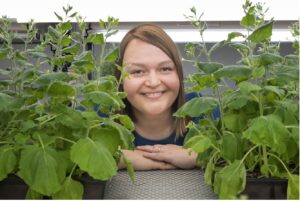
Photosynthesis forms the basis of plant development and productivity. Understanding molecular mechanisms of this process to genetically re-design plants for more efficient carbon assimilation is the key to sustaining the required increases in crop yields in the face of climate change. I have been working on identifying and testing biotechnological approaches to improve photosynthesis which resulted in discovering genetic modifications that have a potential to increase crop yield. I found that C4 photosynthesis, a special type of photosynthesis that many important crops like maize and sorghum have, is limited by a supply of ATP and NADPH from the electron transport reactions. I showed that increasing the rate of chloroplast electron transport improved CO2assimilation rates and yield in model and crop C4 species in controlled conditions. I have also been involved in the C4 Rice project, an international consortium funded by the Gates Foundation to engineer C4photosynthesis into a C3 crop rice to benefit smallholder farmers. My work in the project resulted in creating a metabolic prototype of C4 rice, a steppingstone towards the development of up to 50% higher yielding rice varieties with superior water use efficiency.
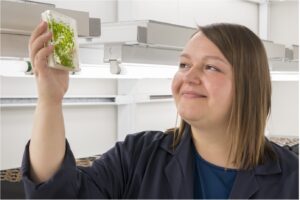
In my Plant Energy and Biotechnology Research group at Monash University, I look forward to continuing developing new approaches for creating more energy-efficient plants better suited for future climates and making a positive impact to Australian food and energy security.
Events
Please login and check your ASPS membership is up to date. Encourage your colleagues and students to join ASPS.Tweet to @asps_ozplants your news and upcoming events and follow to keep up to date.

